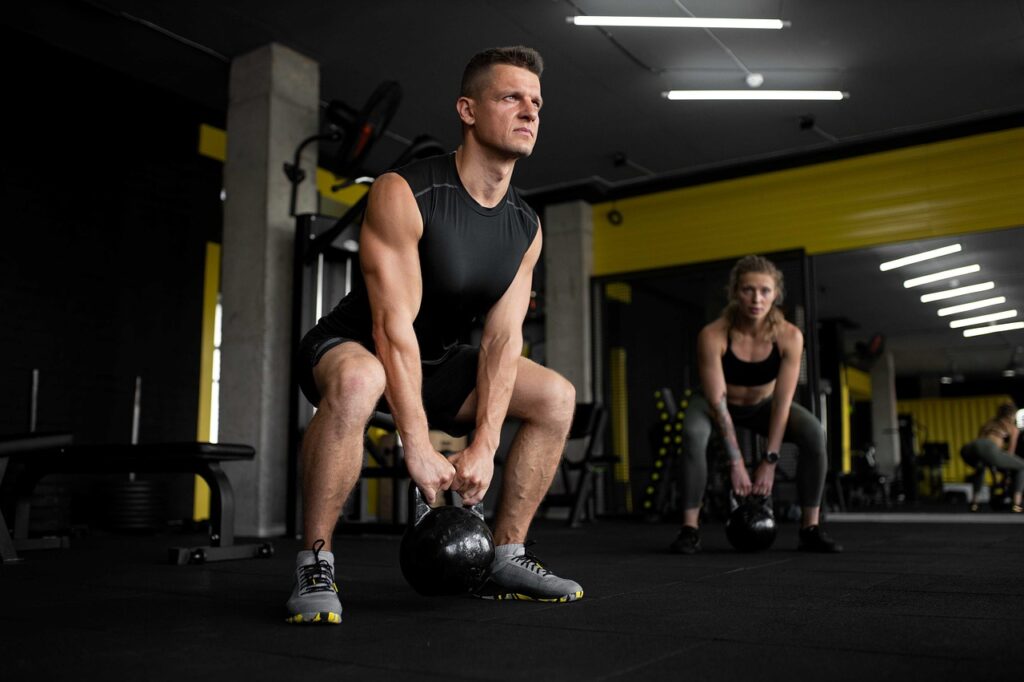
Determining the ideal workout duration can be a puzzling task. “How Long Should Your Workout Be?” is a common question among fitness enthusiasts and beginners alike. This article will dive into the optimal workout lengths, compare short vs. long workouts, explore intensity levels, and offer a timeline for seeing real results. Here’s what we’ll cover:
- 15 Minutes vs. 30 Minutes: Which Duration Offers Better Results?
- The 3-Day Rule: How Many Days a Week Are Optimal for Results?
- Intensity Matters: How Short, High-Intensity Workouts Can Maximize Results
- Real Results: What to Expect After 1 Week, 1 Month, and 3 Months of Regular Workouts
- Beyond the Clock: How Consistency and Form Influence Workout Results
Stay tuned as we break down the most effective workout timeframes for achieving your goals!
15 Minutes vs. 30 Minutes: Which Duration Offers Better Results?
When it comes to workout duration, a common debate is whether a 15-minute workout can be as effective as a 30-minute one. If you’re short on time, a high-intensity 15-minute session can still offer significant benefits. Think of it as packing a lot of punch in a short duration. These condensed workouts focus on maximum effort, often incorporating High-Intensity Interval Training (HIIT). Compared to longer sessions, you might find yourself burning nearly as many calories in half the time. However, for those who have a bit more time, a 30-minute workout often provides more room for a balanced routine, including warm-ups, strength training, and cool-down periods.

The 3-Day Rule: How Many Days a Week Are Optimal for Results?
If you’re wondering how many days a week you should exercise, the 3-day rule offers a simple yet effective guideline. Engaging in a fitness regimen three times a week seems to hit the sweet spot between overtraining and undertraining. This frequency allows for sufficient rest and recovery, which is crucial for muscle growth and overall fitness. It’s especially effective when combined with a balanced diet and proper hydration. Of course, you can adjust this based on your fitness goals and schedule, but consistency in these three days can lead to noticeable results over time.
Intensity Matters: How Short, High-Intensity Workouts Can Maximize Results
Shorter workouts don’t mean you can’t achieve amazing fitness results. High-intensity routines are designed to maximize effort and calorie burn in a limited timeframe. Incorporating HIIT can boost your metabolism, improve cardiovascular health, and enhance muscle tone. These workouts often include quick bursts of intense exercise followed by brief rest periods. By pushing yourself to the limit in these short intervals, you may find that short workouts can indeed yield significant results. So, if time is a constraint, high-intensity sessions might just be your best friend for rapid progress.
Real Results: What to Expect After 1 Week, 1 Month, and 3 Months of Regular Workouts
Understanding what to expect from your workouts at different intervals can help keep you motivated. After 1 week, you’ll likely notice a boost in energy levels and mood due to the release of endorphins. Your muscles may start to feel more engaged, but visual changes will be minimal.
One month into a consistent workout routine, you may begin to see subtle physical changes. Improved muscle tone and endurance are common, and you may notice some weight loss if that’s a goal. The real magic happens as your body starts to adapt to the new routine, making each session feel slightly more manageable.
After 3 months of regular workouts, significant changes become evident. Your stamina and strength will have increased noticeably. Many people experience improved posture and flexibility. This period is crucial for witnessing tangible progress; you might find that clothes fit better and your overall fitness level has reached new heights.

Beyond the Clock: How Consistency and Form Influence Workout Results
While the length of your workout is important, consistency and proper form hold the key to long-term success. Consistent workouts help cultivate a habit, and habits fuel lasting results. Even short workouts can lead to impressive gains when executed regularly. Skipping sessions or irregular exercise patterns often lead to subpar results and increase the risk of injury.
Maintaining correct form is equally vital. Incorrect form can lead to injuries that may set you back weeks, if not months. Taking time to learn proper techniques—either through video tutorials, personal trainers, or fitness classes—can make a world of difference. Remember, even the best workout plan won’t be effective if each exercise is done incorrectly.
Workout Duration and Fitness Goals: Finding Your Balance
Finding your optimal workout duration depends largely on your individual fitness goals. For weight loss, longer sessions with a mix of cardio and strength training may be beneficial. On the other hand, if you’re aiming for muscle gain, shorter but more intense workouts might be more effective. Balancing different types of exercises ensures you’re not only burning calories but also building muscle and improving cardiovascular health.
Keep in mind that the journey to fitness is highly personal. What works for someone else might not work for you. It’s essential to listen to your body and adjust your workout routines accordingly.
Stay tuned for the conclusion, where we’ll wrap up our exploration of the most effective workout timeframes for achieving rapid and lasting results.

Determining “How Long Should Your Workout Be?” is a multifaceted question that depends on your goals, time availability, and commitment to consistency and form. Whether you choose a 15-minute or 30-minute session, focus on intense routines, or spread your workouts across multiple days a week, the key to seeing results lies in maintaining regularity and correct techniques. Fitness is a journey that rewards persistence, so listen to your body, adjust as needed, and enjoy the progress that comes with each step of your exercise routine. You’re on the right path to achieving the real results you’re looking for, one workout at a time. Stay committed and your results will surely follow!